A few years ago, my parents switched toilet paper brands. While this is surely fascinating information for you personally, it’s relevant here because they switched to “Who Gives A Crap,” a company that donates 50% of its profits to building toilets and improving sanitation in developing countries.
Developing a business model around corporate social responsibility is a great way to use our speck of time on earth to change the world for the better—while still making a profit. After exploring lots of brands that use this strategy well, I compiled some of my favorite corporate social responsibility examples. These businesses do good for others while still doing good for themselves.
Table of contents:
What is corporate social responsibility (CSR)?
You don’t have to be a non-profit to show that you care about the world outside your organization. Corporate social responsibility (CSR) is a business model adopted by for-profit organizations that involves using company resources to benefit society while still pursuing corporate goals.
You’ve certainly heard of “the bottom line” in the corporate world—it’s all about profit. CSR-oriented companies abide by a “triple bottom line” that encompasses two other “P” words: people, whether that be the company’s employees or the population at large, and the planet. In other words, they’re committed to incorporating environmental, social, and governance (ESG) factors into their operations.
Many companies invested in CSR are Certified B Corporations, meaning they meet very high standards of positive social and environmental impact put forth by the non-profit network B Lab. But you can practice corporate social responsibility, certified or not. Here’s what corporate social responsibility may look like in action:
-
Using sustainable manufacturing/production practices
-
Paying workers fair wages
-
Advocating for social justice policy reform
-
Innovating products to solve an environmental or social issue
-
Committing to reducing carbon footprint
-
Donating significant profits to a charitable cause
4 types of CSR
According to Harvard Business School, there are four broad categories of CSR on which businesses tend to focus:
-
Environmental. Businesses in this category focus on making a positive environmental impact. They adopt renewables, “cradle to grave” manufacturing principles, carbon offsets, and sustainable sourcing.
-
Philanthropic. Philanthropic businesses devote themselves to making a positive social impact. They often fund non-profits like universities, museums, arts programs, charities, and other cultural institutions. They might also provide grants and scholarships.
-
Ethical. Companies with strong ethical standards may go as far as codifying their ethics within their corporate structure to show their commitment to align with these values. For example, a company may establish in writing that it will never source materials from suppliers that mistreat their workers.
-
Economic. Companies committed to economic responsibility understand where their dollars are going and what impact they’re having across the value chain. They believe it’s important to pay their employees fair wages, and they exercise good stewardship with their profit.
9 corporate social responsibility examples
There are companies that throw half a percent of their earnings at a random charity, and then there are those that build their entire business model around societal advancement and really get their hands dirty. Here are nine socially responsible companies that inspire with their CSR.
1. Ben & Jerry’s
Ben & Jerry’s commitment to social justice is just about as sweet as a pint of Half Baked®. As a B Corp, it’s committed to using its ice cream to change the world for the better. For example, it invests heavily in building relationships with Black-owned and refugee-hiring suppliers.
But the brand didn’t jump right into the deep end from its inception. From its humble beginnings in the late 1970s until today, the company has gradually advocated for more causes, now including voter rights, climate justice, LGBTQ+ rights, and many more—all while maintaining its brand presence.

Takeaways:
2. Who Gives A Crap
After learning about the brand’s mission, I certainly started giving a crap. Who Gives A Crap takes the shame out of (and adds some humor to) “going number two,” humanizing itself as a brand.
But the brand name and tone aren’t what makes it a socially responsible company. The founders are committed to building toilets and improving sanitation in developing countries to the point that they devote 50% of their profits to this mission, hence their status as a B Corp.
Like many other companies with great CSR, they also strive to be environmentally friendly, using plastic-free products and using sustainable materials like bamboo and recycled paper to manufacture toilet paper (among other paper products like tissues and paper towels).
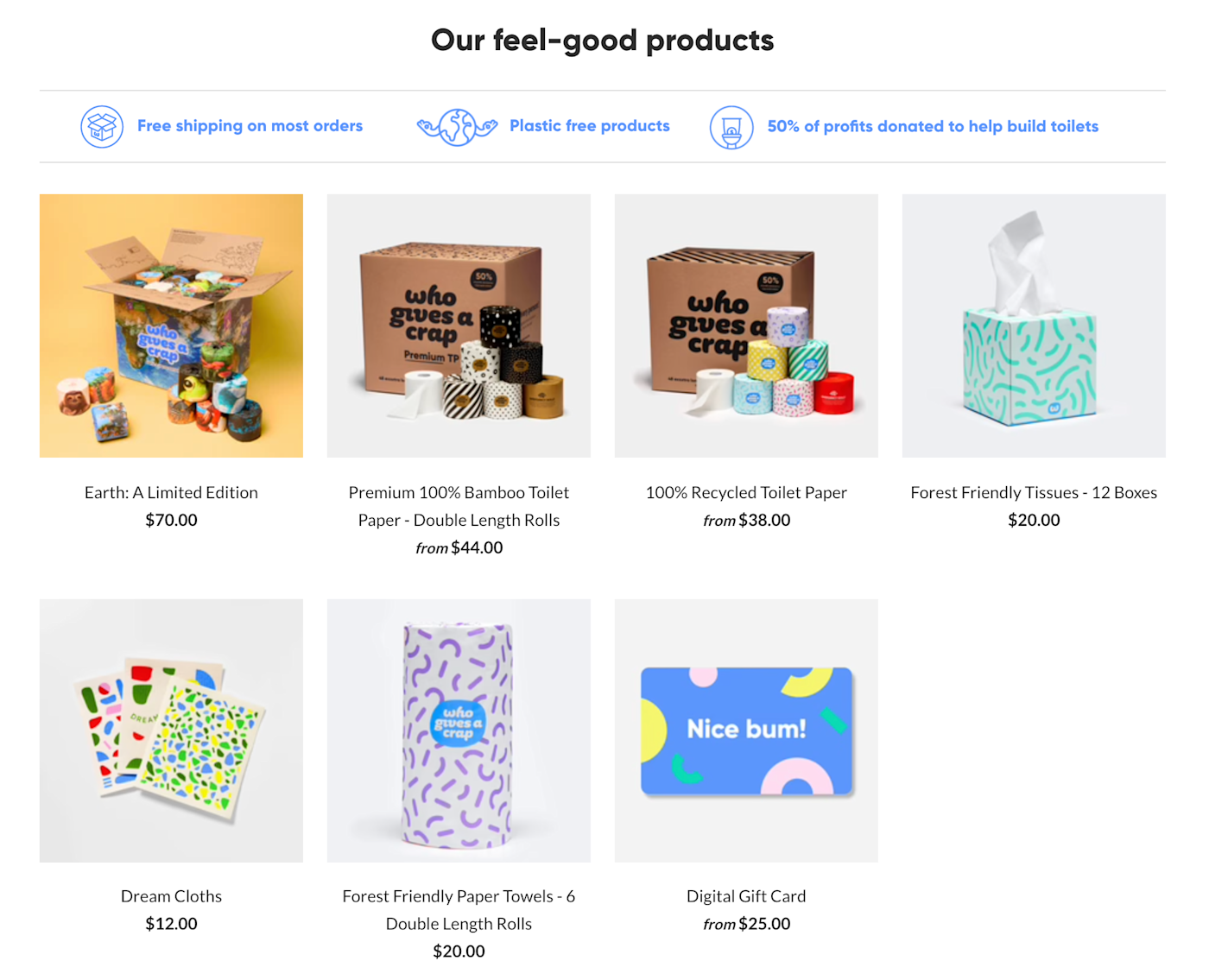
Takeaways:
-
CSR doesn’t have to be serious stuff. Be authentic and honest with your brand’s tone.
-
When expanding your brand’s offerings, choose products that align with your other CSR objectives.
3. Tom’s of Maine
If you’ve ever felt like there’s no more room for innovation in your industry, think again. Tom’s of Maine proved that a centuries-old industry (toothpaste) had more work to do by inventing the first recyclable toothpaste tube.
The company also exhibits transparency, providing detailed information about each of its ingredients so that consumers aren’t left guessing what they’re using to brush their teeth.
Tom’s is also a great example of companies with high CSR standards banding together. The brand partners with TerraCycle, a recycling company, encouraging customers to recycle items that your average waste management company won’t take, in order to redeem for charity donations. Since both companies emphasize sustainability and eco-friendliness, they go together like mint and toothpaste.
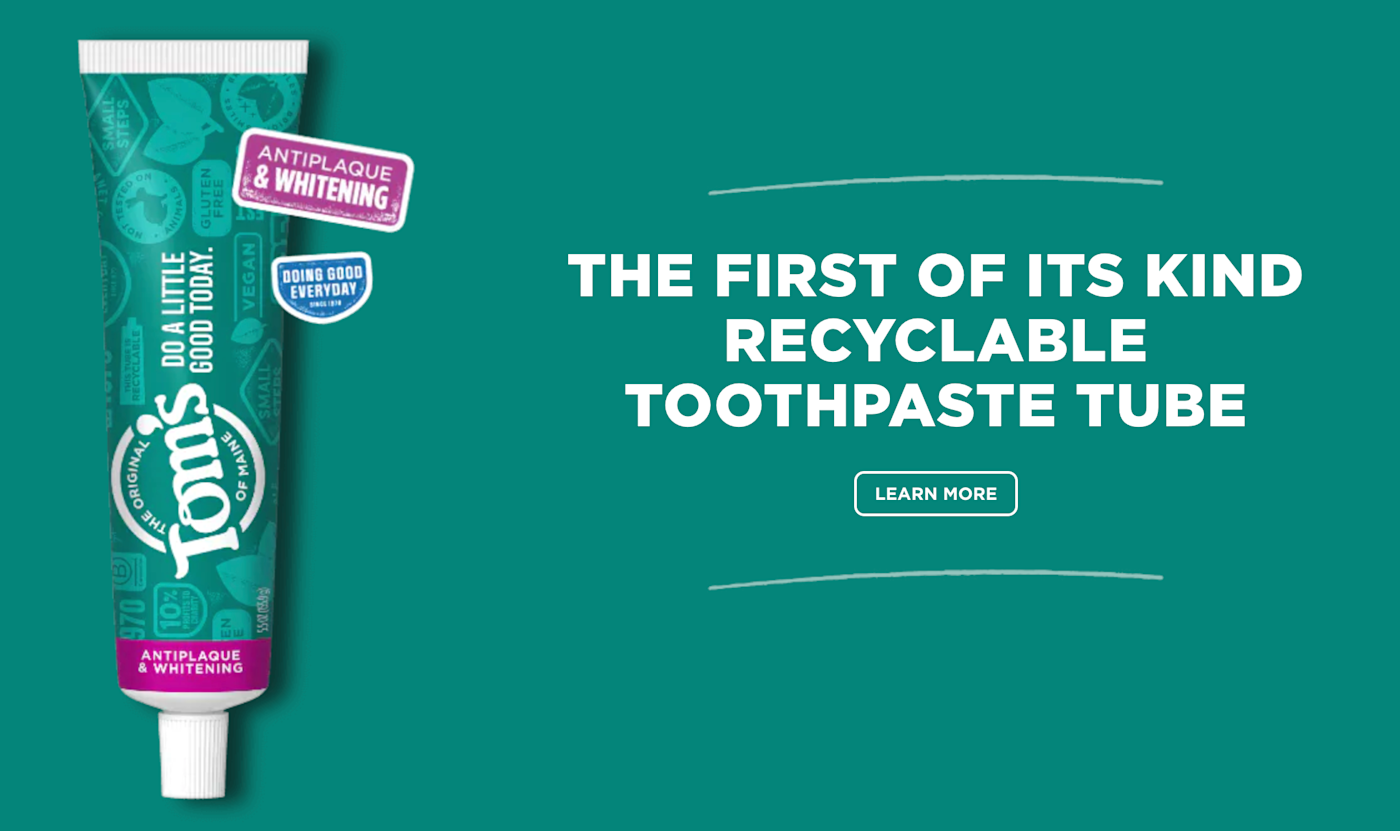
Takeaways:
-
When thinking about innovation, consider CSR—how can you innovate in a way that’s also socially responsible?
-
Partner with relevant, like-minded organizations that also practice CSR.
4. TomboyX
Most retailers produce clothing with a few narrowly-defined body types and presentations in mind. Most people don’t fit those molds.
Queer-founded clothing brand TomboyX believes that everybody deserves to find a fit that makes them feel comfortable in their own skin. The company designs and manufactures clothing for all bodies and gender identities, keeping inclusivity at its core.
The company holds true to this value in its hiring practices as well, with 80% of its C-Suite being women and 63% of managers identifying as LGBTQ+ and/or minority. The brand is also committed to sustainability, forming close relationships with its factories and striving to source organic and recyclable fabrics.

Takeaways:
-
Having personal experience with a social issue makes it far easier to build your business around it. Focus on what matters to you personally.
-
Develop hiring practices that reflect your company’s commitment to CSR.
5. Tony’s Chocolonely
As it turns out, the cocoa industry isn’t as fun and sweet as the product that comes out of it—it’s largely powered by modern slavery and child labor.
Tony’s Chocolonely produces superb chocolate (my favorite being their dark milk pretzel toffee), and it does so ethically. Specifically, it builds relationships with farmers and sources its cocoa beans directly from them, pays them a livable wage, and otherwise supports farmers’ livelihoods and knowledge of safe and ethical practices.
The brand sets its sights high, aiming to change the cocoa industry for the better and eliminate modern slavery in chocolate altogether. It also encourages its customers to flex their creativity and interact with the brand, offering an option to personalize their own chocolate wrappers.
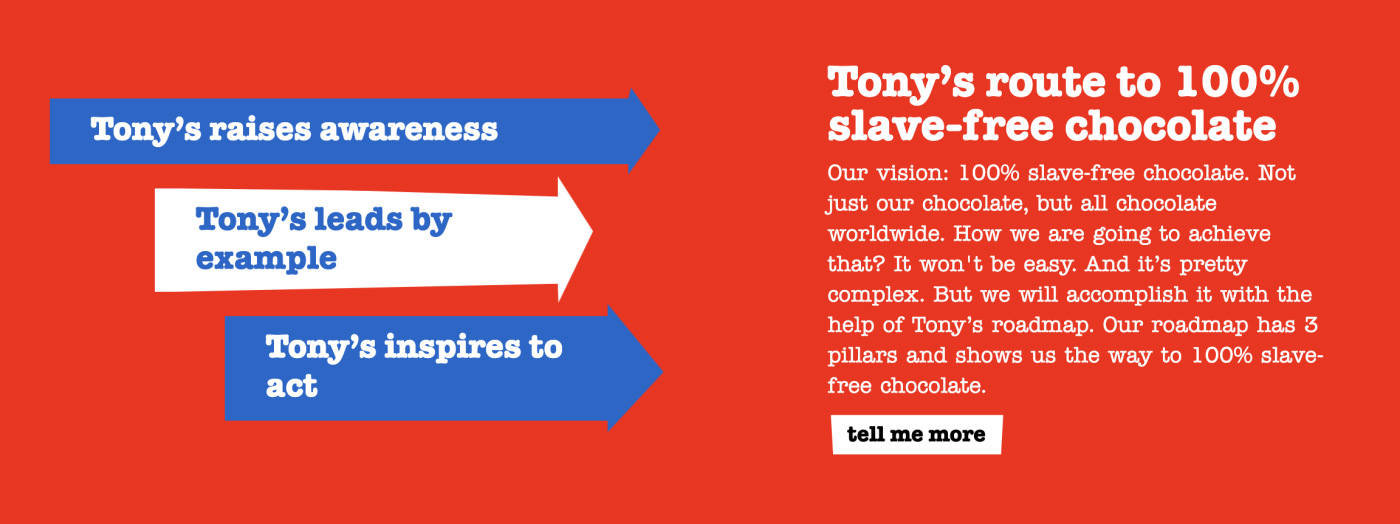
Takeaways:
-
Strive to change your entire industry with your CSR, rather than seeing yourself as an outlier.
-
Offer creative opportunities for your customers to engage with your mission.
6. Allbirds
According to Allbirds, shoes and sustainability make a great pair (pun intended). The brand is currently carbon-neutral and aims to have zero emissions by 2030 through tactics like regenerative agriculture and using renewable materials. Plus, Allbirds’ shoes are durable and machine washable, making them easy to freshen up and use for many more months.
The brand emphasizes sustainability not only in its production, but also in the way it treats its workers. The brand has a strict code of conduct regarding the ethical treatment of employees and frequently visits and audits those factories to ensure their standards are being met.
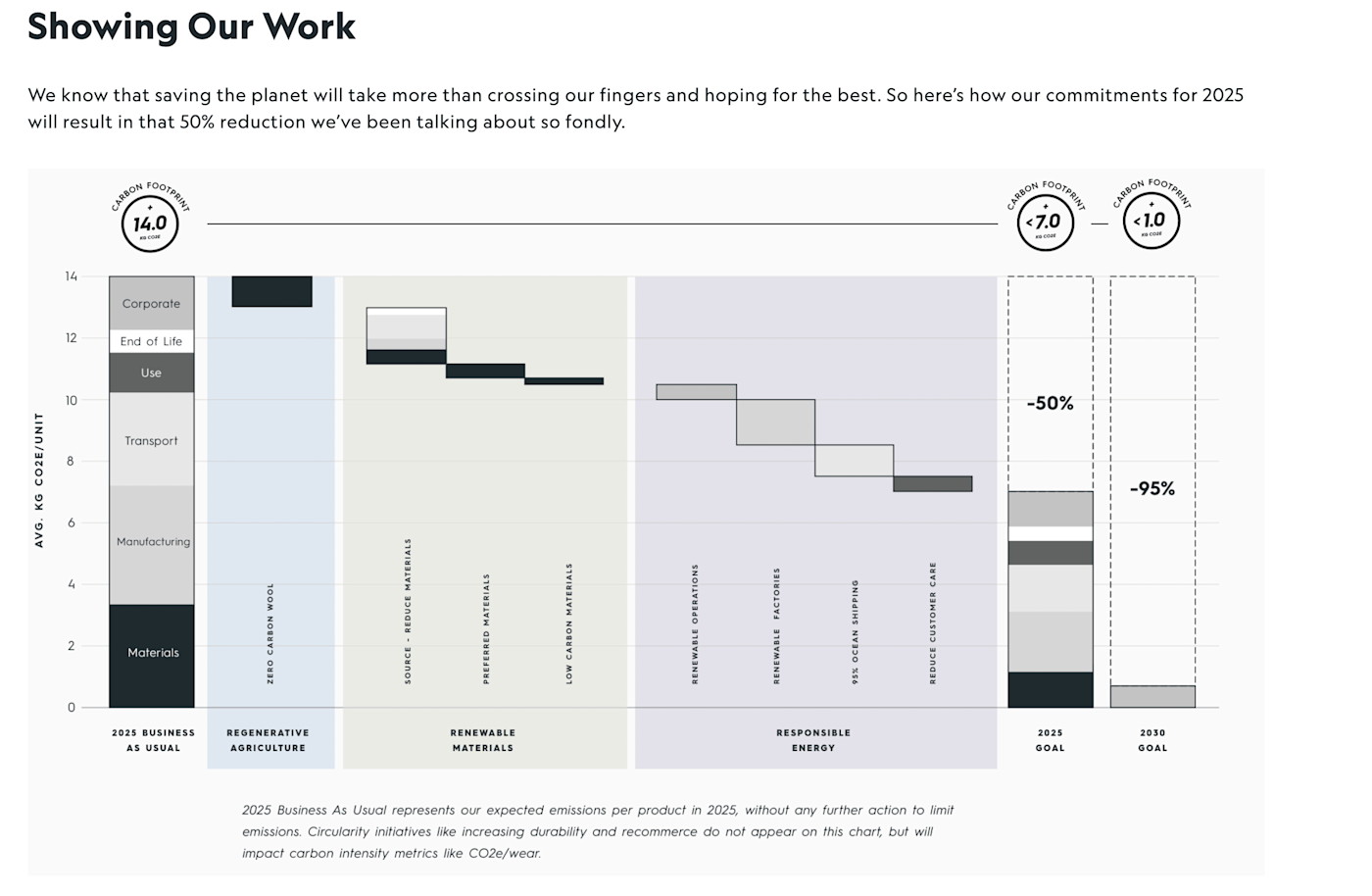
Takeaways:
-
Create both short- and long-term CSR goals.
-
Commit to your cause in a well-rounded way, not just focusing on one area of your business.
7. Rent the Runway
Thanks to Rent the Runway, you don’t have to be a millionaire to wear designer clothes to your next bougie function. The company makes high-end apparel affordable and accessible by allowing customers to rent their clothes before choosing to either purchase them or send them back.
For those who regularly enjoy galas and nights out on the town, the brand offers a membership program that keeps its members equipped with a rotating selection of four outfits at a time.

Rent the Runway’s mission is closely tied to sustainability. Too often, people purchase an outfit for a single event and then proceed to never wear that outfit again, resulting in textile waste. The company allows several people to enjoy an outfit for an evening out without making them pay top-dollar to purchase it. The brand now also offsets 100% of carbon emissions from shipments and aims to operate with net zero carbon emissions by 2040.

Takeaways:
-
You can be socially responsible without shying away from profitable strategies like a membership-based business model.
-
Industries that produce a lot of waste offer the greatest opportunity for sustainability innovation.
8. Hive
Online grocery store Hive aims to make sustainable grocery shopping a breeze. The company does its due diligence to screen products and packaging for sustainability and ESG impact so that customers don’t have to do the work themselves.
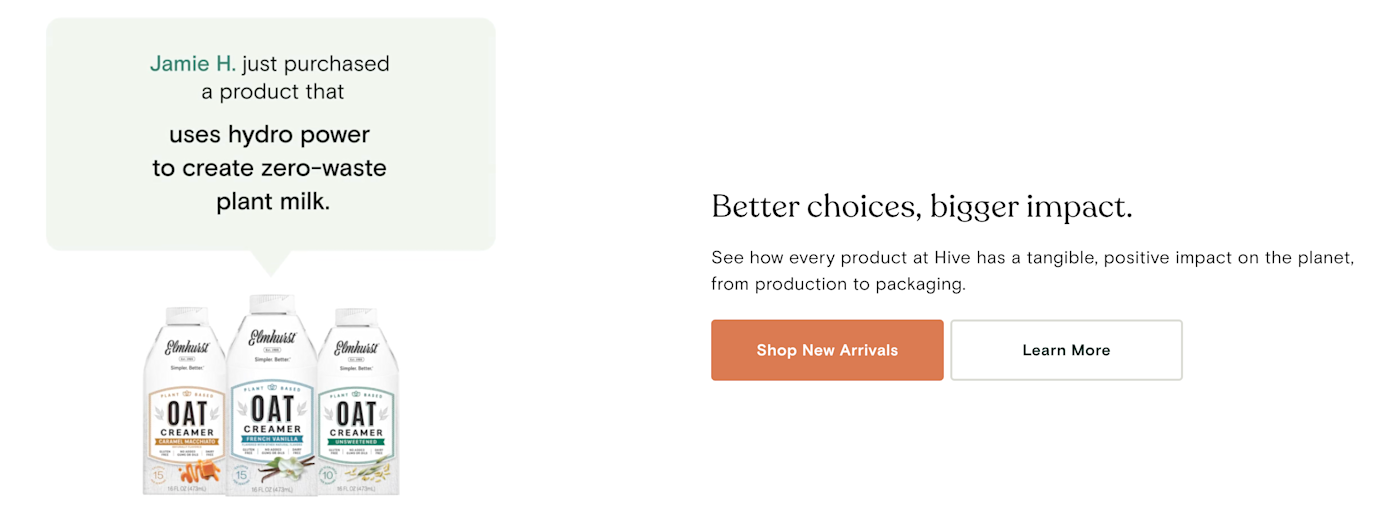
Hive notifies customers of their eco-friendly impact statistics after every purchase, providing them with a sense of accomplishment and satisfaction. And the dopamine rush doesn’t end there—Hive ships its products in cute cardboard boxes filled with recyclable packaging materials that resemble honeycomb. I’ve ordered a few boxes myself, and I can honestly say that opening a Hive box takes me back to being a kid on Christmas morning.
Takeaways:
-
Build CSR into each step of your customer journey.
-
Lift the curtain for your customers, so they can feel like they’re a part of your mission.
9. BLK + GRN
BLK + GRN is a Black women-owned natural marketplace. The brand is committed to educating consumers on toxic ingredients that are often included in personal care products marketed to Black women and supporting sustainable products from Black artisans and health experts.
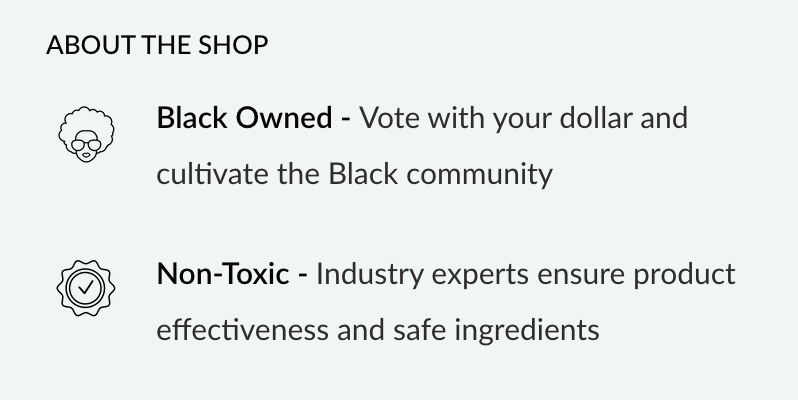
The company even curated a list of widely tolerated toxic ingredients that will never show up in its products, coined its Toxic Twenty List. It serves as an informational resource for readers who want to learn more about ingredients they should avoid.
Takeaways:
How to build a CSR business model
Don’t just throw CSR against your business’s wall and hope it sticks—it has to be implemented strategically.
Most importantly, ensure your approach aligns with your resources and brand image. For example, Who Gives A Crap chose a philanthropic goal relevant to its product offering. The brand name itself reflects both of these efforts and does so in a creative and witty way.
You should also be wary of half-baked initiatives and the temptation to cut corners. Many brands simply throw an eco-friendly label on their packaging (a strategy known as greenwashing), whereas Hive carefully inspects all of its products to make sure they’re actually being kind to the earth and its people.
Taking these steps will ultimately benefit you. If you execute CSR strategically, you can become a Certified B Corp, improving your business’s reputation and attracting new customers.
Related reading:
This article was originally published in June 2021 by Jeremy DuCheny. The most recent update was in October 2022.
[adsanity_group align=’alignnone’ num_ads=1 num_columns=1 group_ids=’15192′]
Need Any Technology Assistance? Call Pursho @ 0731-6725516




